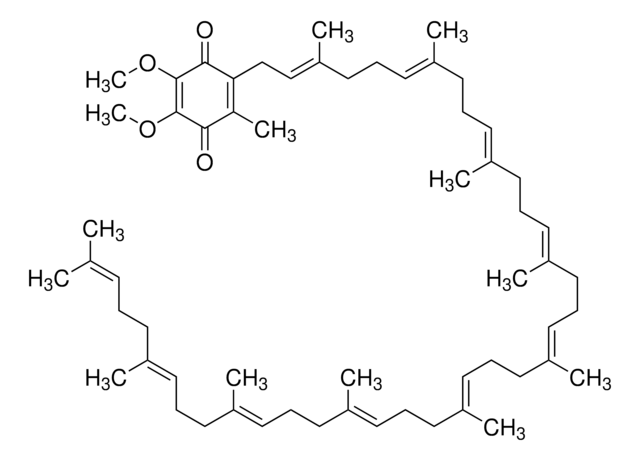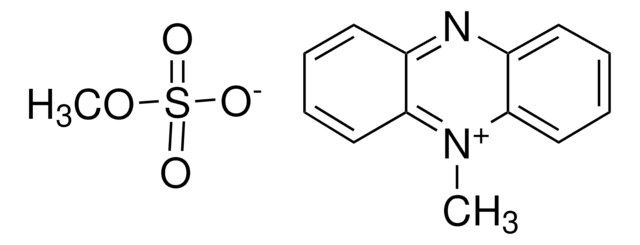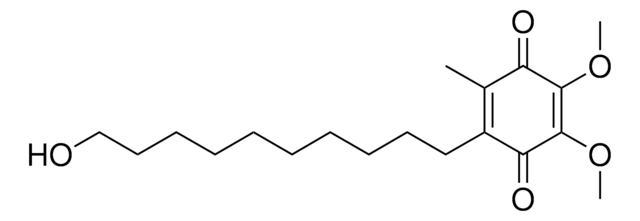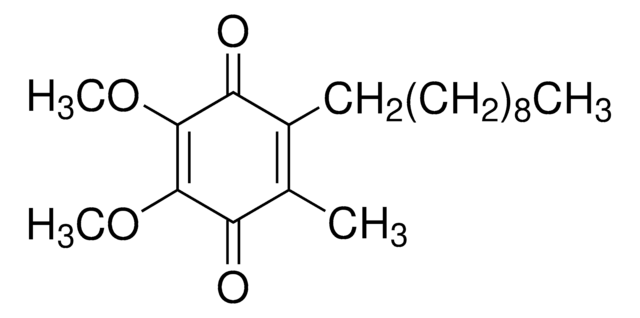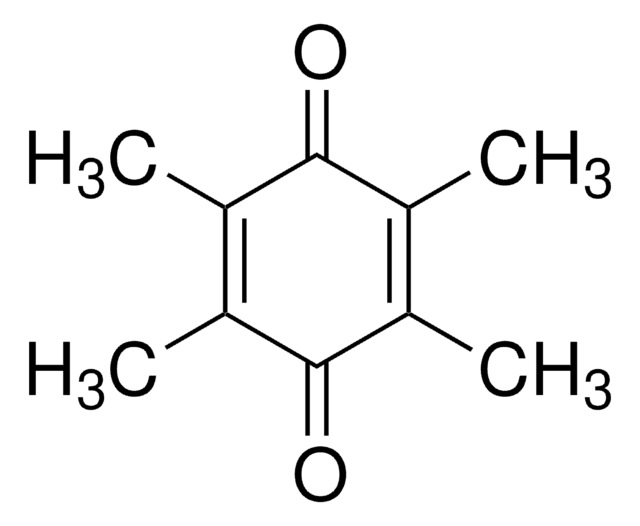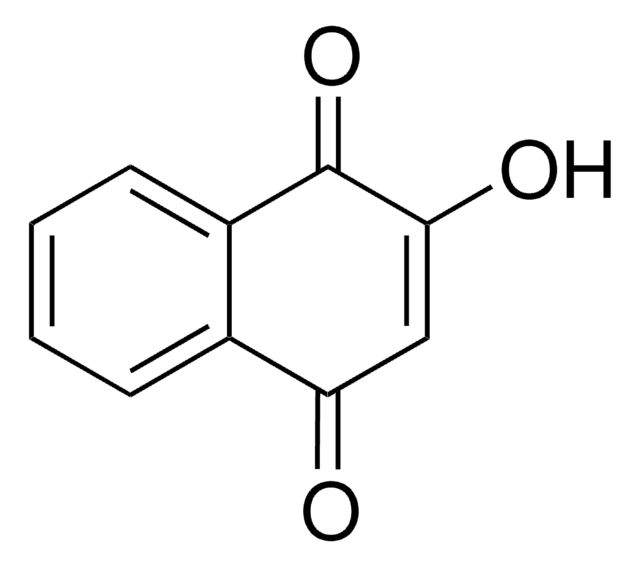おすすめの製品
詳細
2,3-Dimethoxy-5-methyl-p-benzoquinone (Coenzyme Q0 or DMM) is present in all the cells including neural cells.
アプリケーション
2,3-Dimethoxy-5-methyl-p-benzoquinone has been used:
- as a tau protein fibrillization inducer to determine the regions of tau involved in the formation of paired helical filaments (PHFs)
- as a component in buffer B for cytochrome oxidation assay with subsaturating light
- in the RPMI-1640 medium for 2,3-bis-(2-methoxy-4-nitro-5-sulphenyl)-(2H)-tetrazolium-5-carboxanilide (XTT) assay to quantify antifungal activity
Coenzyme Q0 inhibits (via radical quenching) reactions of gamma-irradiation induced homolytic cleavage of O-glycoside bonds in polysaccharides. Coenzyme Q0 induces apoptosis and modulates the cell cycle in estrogen receptor negative breast cancer cells. It is toxic to other cells such as insulin producing cells.
生物化学的/生理学的作用
2,3-Dimethoxy-5-methyl-p-benzoquinone (Coenzyme Q0) interacts with tau protein and aids in the formation of filamentous structure.
シグナルワード
Warning
危険有害性情報
危険有害性の分類
Eye Irrit. 2 - Skin Irrit. 2 - STOT SE 3
ターゲットの組織
Respiratory system
保管分類コード
11 - Combustible Solids
WGK
WGK 2
引火点(°F)
Not applicable
引火点(℃)
Not applicable
個人用保護具 (PPE)
dust mask type N95 (US), Eyeshields, Gloves
適用法令
試験研究用途を考慮した関連法令を主に挙げております。化学物質以外については、一部の情報のみ提供しています。 製品を安全かつ合法的に使用することは、使用者の義務です。最新情報により修正される場合があります。WEBの反映には時間を要することがあるため、適宜SDSをご参照ください。
Jan Code
D9150-VAR:
D9150-BULK:
D9150-1G:
D9150-5G:
この製品を見ている人はこちらもチェック
XTT assay of antifungal activity
Loures FV and Levitz SM
PLoS Pathogens, 5(15), e1543-e1543 (2015)
The Photosynthetic Bacterial Reaction Center: Structure and Dynamics, 114-114 (2013)
Augustin C Mot et al.
PloS one, 15(1), e0225530-e0225530 (2020-01-22)
Yellow laccases lack the typical blue type 1 Cu absorption band around 600 nm; however, multi-copper oxidases with laccase properties have been reported. We provide the first evidence that the yellow laccase isolated from Sclerotinia sclerotiorum is obtained from a
In vitro tau fibrillization: mapping protein regions
Santa-Maria I, et al.
Biochimica et Biophysica Acta (BBA)-Molecular Basis of Disease, 1762(7), 683-692 (2006)
Yung-Fu Wang et al.
Bioelectrochemistry (Amsterdam, Netherlands), 69(1), 74-81 (2006-01-25)
Bioelectrocatalytic oxidation of acetate was investigated under anaerobic conditions by using Escherichia coli K-12 (IFO 3301) cells cultured on aerobic media containing poly-peptone, glucose or acetate as the sole carbon source. It was found that all E. coli cells cultured
ライフサイエンス、有機合成、材料科学、クロマトグラフィー、分析など、あらゆる分野の研究に経験のあるメンバーがおります。.
製品に関するお問い合わせはこちら(テクニカルサービス)
